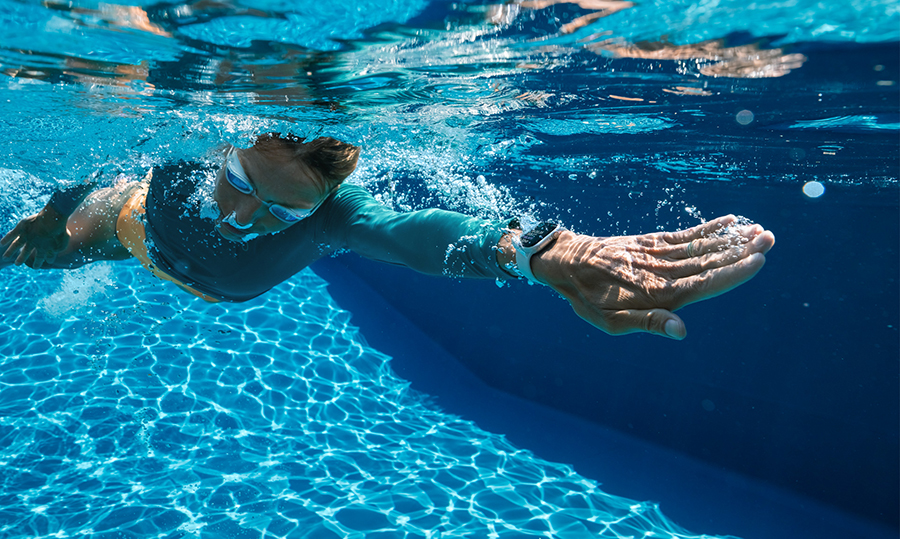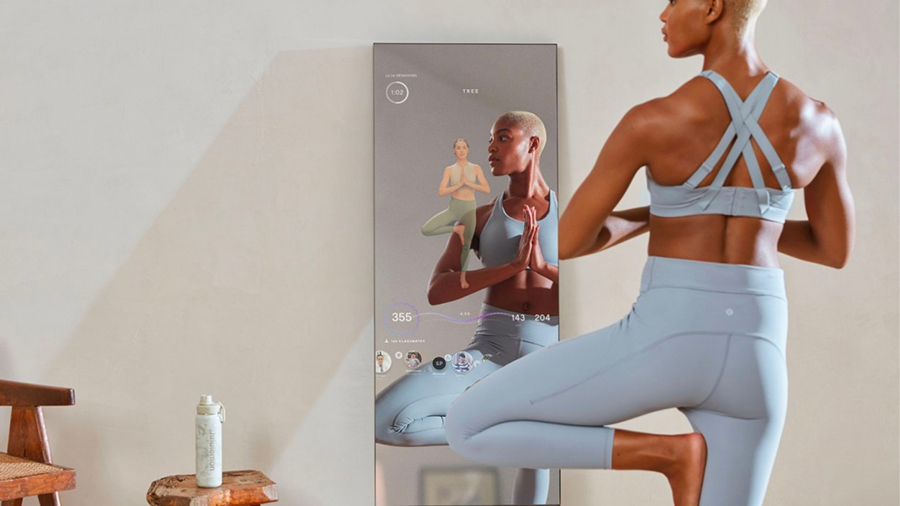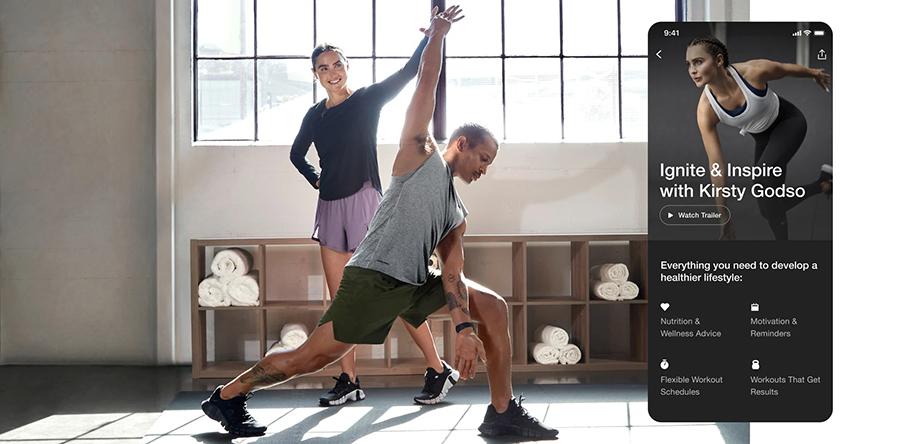Tech for Your Fitness Refresh, From Wearables to Home Gear

There's no shortage of tech to help you be your best self. Photo: Courtesy of Peloton
It’s a new year, a fresh start, and so perhaps you’re looking to improve something about yourself in 2023. If your goal is to focus on your physical health, technology can help motivate you, better track your progress and make fitness more, well, engaging and fun.
Whether it’s to strengthen your heart, sleep better or slim down — or all the above! — we all appreciate the importance of exercising, but sometimes we need a little kick in the pants to get going.
This is where tech comes in.
From wearable trackers and at-home equipment to smart apps to virtual exercise classes, there’s no shortage of hardware and software to help you be your best self.
Wearables
A smartwatch lets you choose how (and where) you want to stay fit — with whatever equipment you already have at your disposal, or none at all.
Many can track your vitals, too, and alert you to any potential health issues.
Along with monitoring the basics like steps taken, pace and estimated calories burned, devices like the Fitbit Sense 2 ($299) offers all-day health tracking — such as blood oxygen (SpO2) levels, ECG tracking and heart rate variability, and an EDA scan for stress management (which includes sensors that measure electrodermal responses on your skin).
The smartwatch also helps you understand your sleep quality with a personalized Sleep Score.
Fitbit Sense 2 includes six months of Fitbit Premium Membership ($79/year), for deeper, highly personalized health insights.
(If all you need is a basic tracker opposed to a fully featured smartwatch, the Fitbit Inspire 3 is $79, or the Fitbit Charge 5, with larger screen and additional sensors, is $129.)
Another popular option is Apple Watch Series 8 (from $529), packed with health and fitness features, including auto-tracking of all kinds of workouts, an embedded ECG that can detect unusually high or low heart rates or irregular heart rhythms (arrhythmias), as well as a blood oxygen monitor (pulse oximeter) to assess the amount of oxygen carried in the body by sending light into your wrist.

Apple Watch also has integrated fall detection, which can call emergency services and select contacts if it detects a sudden drop, and you don’t confirm you’re okay. New to this model is crash detection, which can detect if you’ve been in a car accident and call 911, your emergency contacts, and share your location info.
(Note: Fall detection is also available on the less expensive Apple Watch SE, starting at $329.)
As you might expect from a smartwatch, Apple Watch Series 8 also features customizable watch faces and colours (to match your ensemble), delivers push notifications to your wrist (like text messages) and can stream music to wireless earbuds when out for a walk. You can wave your wrist at the checkout counter to buy something, find your parked car and use your voice to control your smart home.
Apple Watch works with Apple Fitness+ ($99/year, after three free months), per below.
Ideal for Android phone owners, Samsung’s Galaxy Watch 5 (from $349) is also a water-resistant smartwatch that features a sapphire crystal face, advanced sleep coaching and a Samsung body analyzer that can track body composition based on weight, body fat, body mass index (BMI), skeletal muscle and more.
Home Gear
Budget permitting, fitness equipment lets you work out in the privacy of your own home, and there are many brands to choose from, and type of gear, too — such as an exercise bike, treadmill, rowing machine, elliptical or weight training system.
Building on its success with Peloton Bike+ ($3,295), Peloton’s latest is Tread ($4,495 + $55/month All Access subscription), a premium treadmill for walking, jogging and running, with instructor-led classes on its nearly 24-inch HD touchscreen, which can be rotated and tilted up and down 50 degrees. Slightly smaller than its predecessor, Tread is ideal for both casual users and those training for a marathon (and anyone in between), as the video content selection is vast — including a Tread Bootcamp, Road to 5K program and a new feature dubbed Just with Goals, which allows you to set a goal for distance and time. See and compare your metrics, workout history, and opt in for Strava integration, a social network for athletes.
While home fitness behemoths like Peloton fuse video instructors with its exercise equipment, its popular Peloton App ($16.99/month after 30-day free trial) can be used with or without at-home hardware and can be accessed on several devices: iPhone, iPad, Android phones, Android tablets, Fire tablets, Android TV, Fire TV, Apple TV, Roku or the web.
The Peloton app membership offers access to thousands of live and on-demand classes, covering several workout types, including indoor cycling, running, walking, bootcamp, strength, yoga and outdoor (audio-only) classes, and curated music.
Similar to its All Access membership, which is required with Peloton equipment, you can see metrics and performance tracking to keep you motivated, plus you can see other members taking the same class as you. (Note: Peloton’s All Access membership gives you access to the Peloton app, at no extra charge, but not the other way around.)
Vancouver’s Lululemon has also kicked its way into home fitness.
When it’s off, it’s a mirror. When it’s on, Lululemon Studio ($995, plus $49/month for membership fee) is an interactive home gym that streams live and on-demand classes from top trainers. Designed to fit any room and transform two feet of wall space into your personal fitness studio, exercise categories include kickboxing, strength, yoga, cardio and Pilates.

For up to six household members, the service gives you access to more than 10,000 workouts, says Lululemon, including content from partners like Pure Barre, DOGPOUND, Y7 Studio, AARMY, Rumble and others.
What’s more, you get 10 per cent off (almost) all Lululemon purchases.
Apps, Websites
From countless (and free) YouTube videos by personal trainers and fitness instructors to national fitness clubs offering virtual workouts (including Planet Fitness and GoodLife Fitness), there is no shortage of streaming video classes to find online — and whichever device you rely on.
Even Roku, the popular video streaming platform, offers several hundred fitness (and mindfulness) channels to watch, including both free and paid services.
Other popular picks for live and/or on-demand fitness classes include apps like Daily Burn (Android and iOS), Nike Training Club, Obé Fitness (Android and iOS), Fitbit Premium, Popsugar Fitness, Beachbody on Demand and Fitness Blender, to name a few.

As mentioned above, the Peloton app is a good idea, as is Apple Fitness+ ($99/year), an exclusive service designed for those on iPhone, iPad, Apple TV, and Apple Watch (with personalized metrics captured on your wrist). Supporting up to five family members per subscription, Apple Fitness+ provides access to thousands of 4K video and audio workouts, led by expert trainers, from 5 to 45 minutes per session.
Exercises include walking, running, HIIT (high intensity interval training), strength training, yoga, Pilates, cycling, dance, rowing and more — even guided meditation — and each with music playlists. New workouts and meditations are added every week, says Apple.
While most classes don’t require any equipment, for some you may need items like a yoga mat, dumbbells, an indoor cycling bike, a rowing machine or a treadmill. You can use any brand or price-point of equipment.
RELATED:
Wellness Tech: Apps and Gadgets Designed to Boost Mental Health